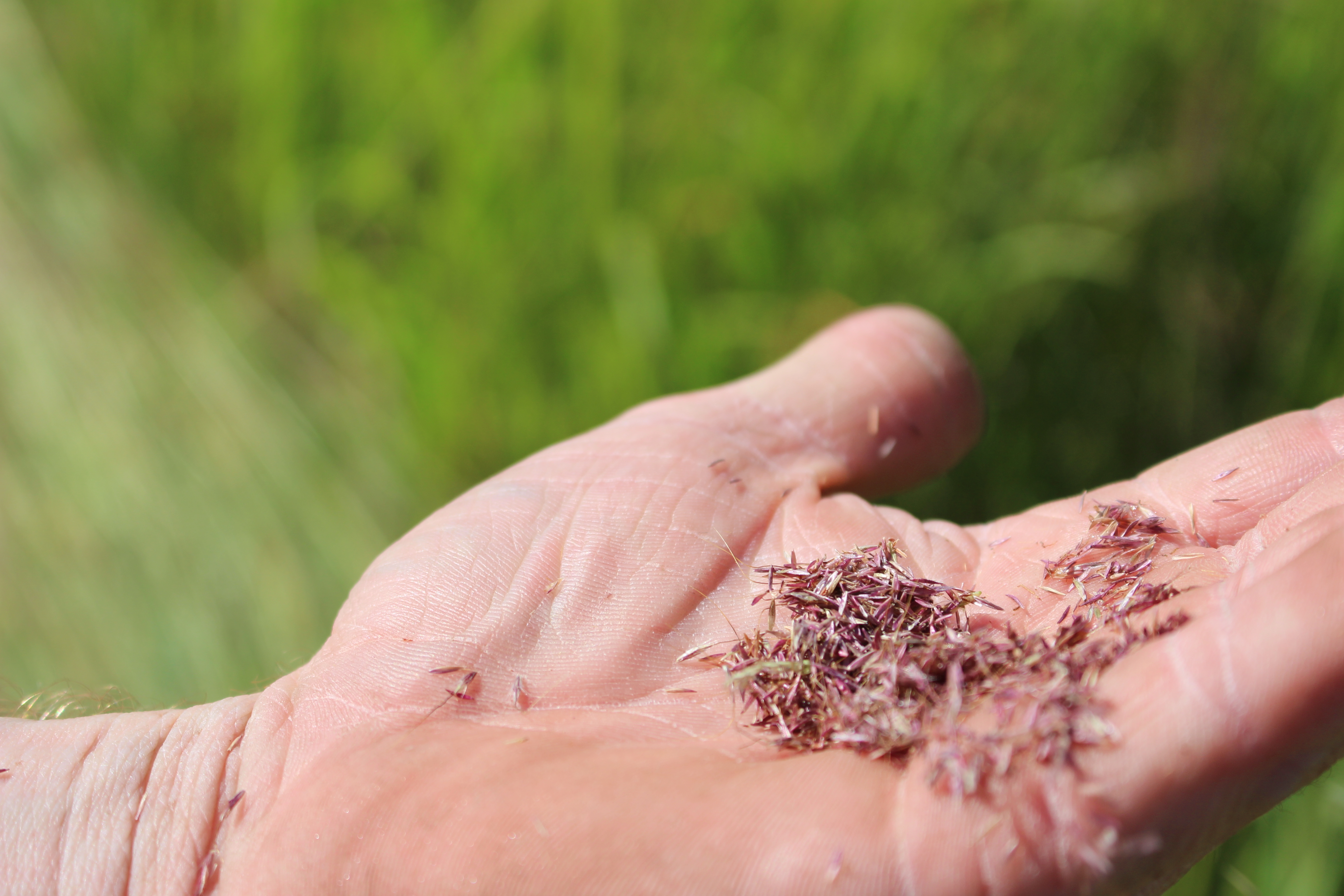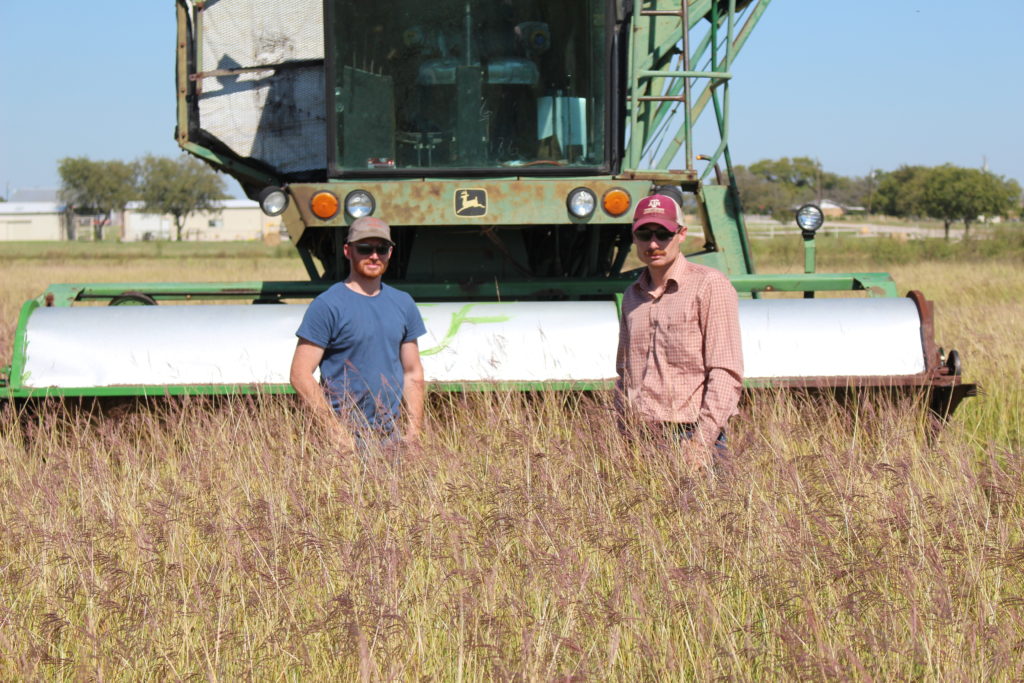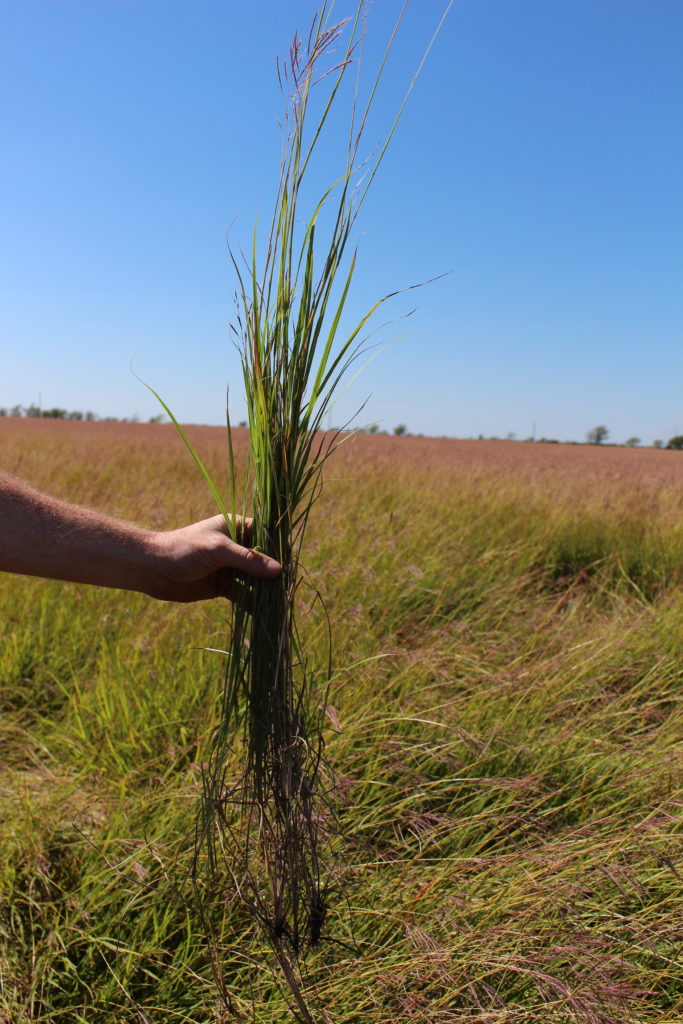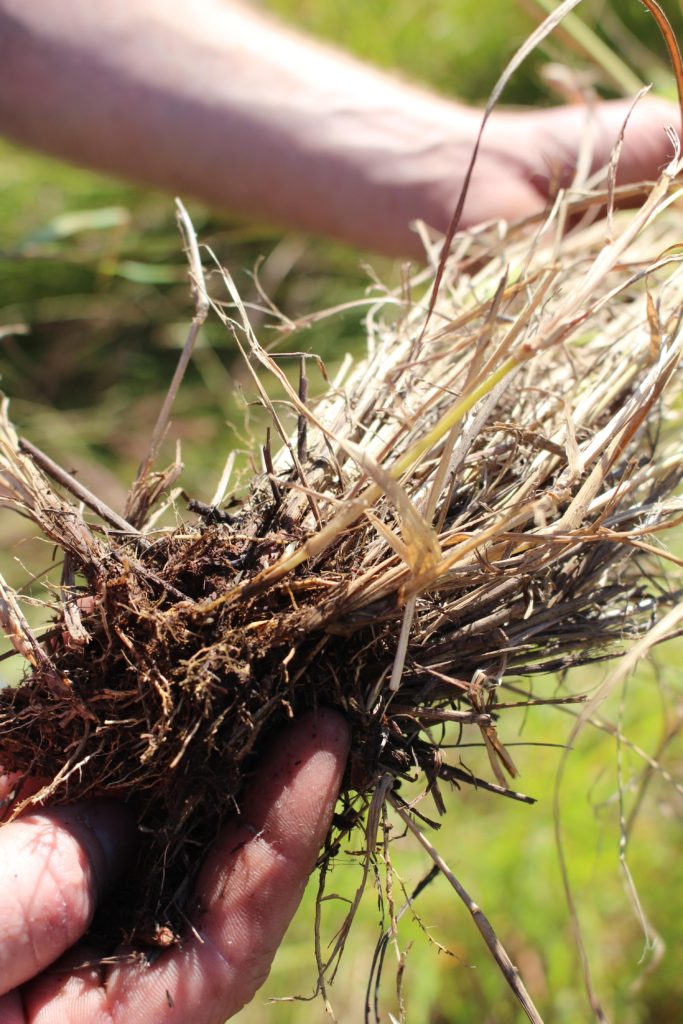Farm & Ranch
Grass seed harvest – ‘WW-B Dahl’ Old World Bluestem

By Jessica Crabtree
On an unusually warm day in October, I visited the Fortenberry brothers on some of their farm country in Slidell, Texas. Brothers Ethan and Bain have been farming together along with their family for years. Both attended college at Texas A & M University obtaining degrees in agronomy. Since they were small, tractors and equipment have been the major interest of the two. It is no surprise that the two came back after college to farm with the family.
Understanding the ends and outs of farming, the brothers are some-what entrepreneurs, always looking to find success in different avenues.
Raising crops and cattle, the two look for opportunities that make them money, a better return for their investment. “Here the soil is black and full of rock. We can’t grow Bermuda with that,” Ethan explained. Growing, cutting and baling hay is a huge portion of the farmer’s production plan. “Hay is hard to grow and after you strip it from the land, you take it away, never putting anything back into the soil,” he added.
While at Texas A&M, the brothers worked for the USDA forage breeding program.
There, Ethan was introduced to the method of harvesting grass seed. Intrigued, Ethan saw it as an opportunity to implement it into his farming program. Four years ago he purchased an old ’80s model John Deere 484 cotton stripper. He had seen how other grass strippers were built and knew the general principle. That’s when the two worked together with their uncle, Les Fortenberry, to develop their own. “Since it was a cotton stripper originally, we had to consider the seed and its size and adapt to it. The interior is lined with grain bags, thick plastic so we can contain as much of the seed as possible,” the farmer said.
To read more pick up a copy of the December 2016 NTFR issue. To subscribe call 940-872-5922.
Farm & Ranch
Hazards of Backyard Poultry

By Barry Whitworth, DVM
Having backyard poultry is a popular agriculture enterprise. According to the United States Department of Agriculture, 0.8 percent of all households in the United States have chickens. People keep chickens for a variety of reasons with table eggs being one of the more common reasons.
Unfortunately, some of these poultry producers are not aware of the hazards that come with keeping poultry because many times they carry pathogens but appear healthy.
Chickens are carriers of several zoonotic diseases. These are diseases that can be passed from animals to humans. According to a recent survey in Pennsylvania, a majority of backyard poultry producers were aware of the dangers of avian influenza. However, this study also revealed that far fewer producers were aware of the risk of possible exposure to Salmonella and Campylobacter.
The lack of knowledge about the hazards of raising poultry likely contributes to the continued issues of Salmonella outbreaks associated with backyard poultry. In 2023, the Centers for Disease Control and Prevention reported 1,072 illnesses of Salmonella linked to backyard poultry, and 272 of those patients required hospitalization. Oklahoma reported 43 individuals with the disease.
To read more, pick up a copy of the April issue of NTFR magazine. To subscribe by mail, call 940-872-5922.
Farm & Ranch
Ag Elsewhere: Wyoming

By Tressa Lawrence
Babies are tucked away in every nook and cranny. Many ranchers across Wyoming have baby animals popping up all over this time of year.
Farm & Ranch
Ag Elsewhere: Montana

By Lindsey Monk
Another load of grain in to keep feeding the calves until the green grass can really start popping.
-

 Country Lifestyles1 year ago
Country Lifestyles1 year agoScott & Stacey Schumacher: A Growth Mindset
-

 Equine7 months ago
Equine7 months agoThe Will to Win
-

 Country Lifestyles7 years ago
Country Lifestyles7 years agoStyle Your Profile – What your style cowboy hat says about you and new trends in 2017
-

 Country Lifestyles4 years ago
Country Lifestyles4 years agoAmber Crawford, Breakaway Roper
-

 HOME7 years ago
HOME7 years agoGrazing North Texas – Wilman Lovegrass
-

 Country Lifestyles7 years ago
Country Lifestyles7 years agoDecember 2016 Profile, Rusty Riddle – The Riddle Way
-

 Country Lifestyles8 years ago
Country Lifestyles8 years agoJune 2016 Profile – The man behind the mic: Bob Tallman
-

 Outdoor9 years ago
Outdoor9 years agoButtercup or Primrose?










